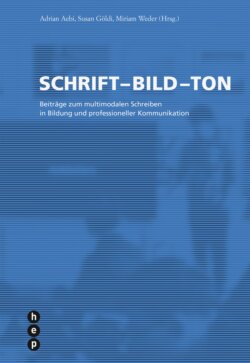Читать книгу Schrift - Bild - Ton (E-Book) - Mirjam Weder - Страница 12
Introduction
ОглавлениеI am the director of the Writing Centre at the University of Cape Town. This is a voluntary drop-in centre where students at all levels of study can come and consult about their academic writing. We also run workshops and seminars on writing which are more embedded within the disciplines. As social, political and economic power is closely associated with knowledge of certain discourse forms, our Writing Centre aims to promote and facilitate access to higher education, within an ethos of social justice and national redress in the South African context. Our ethos is that the Writing Centre can work effectively with students if that work is situated within a desire to understand and negotiate diversity and difference rather than the institutional need to manage it (Archer 2010).
I am currently engaged in a three-year British Academy funded project called Changing Writing. There are three themes in the project. The first theme, which this chapter feeds into, includes looking at how academic voice and argument are constructed through different modes. A mode is the culturally shaped material available for representation such as visual mode, oral mode or written mode. Secondly, the project is looking at ways of teaching and assessing writing in diverse contexts. And lastly, it is examining how writing is re-configured in different media, focusing on the materiality of the media, the mobility of the media, the imagined audiences, the spaces and places of writing. A paper-based manga comic, as compared to the same comic on screen, is a good example of the effects of the materiality of the media. The book as object does play a role in narrative and in comics, page turning typically functions as a transition device. Materiality, in this way, is incorporated into the narrative. Compare that to the online version. Many comics found online are actually produced for the page, which means that viewing them on the screen can place particular constraints on them. For example, the page on screen cannot be viewed as a full image but can be seen only when scrolled down. This affects the flow in the reading. Online comics, however, have other affordances. They allow access to other volumes of work, connection to a community and provide spaces for comment (see Huang & Archer 2014). In this example, it is clear how writing and image as modes translate differently onto the media of page and screen.
Drawing on multimodal social semiotics as a framework, this chapter aims to explore a number of theoretical tools which can «account for the whole domain of representation; which do so aptly for the specificities of each mode» (Kress 2010, 105). It aims to explore semiotic signifiers of academic voice within a range of modes and genres, and to develop a critical metalanguage or framework for academic voice, in order to assist students both in the production and critique of multimodal texts.
